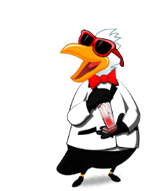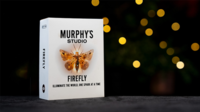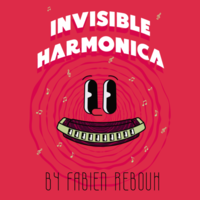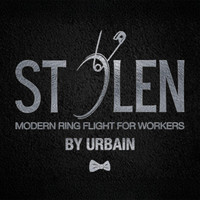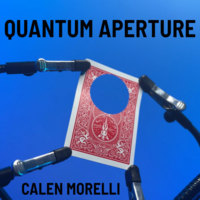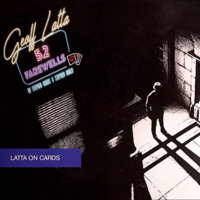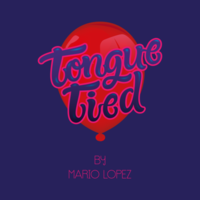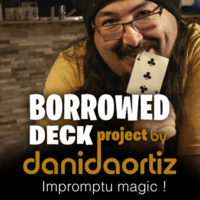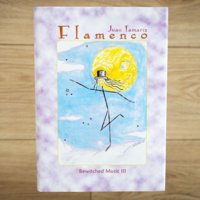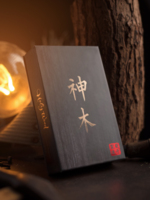Sometimes the Jokes are Just for Me by Master Payne (Instant Download)
Master Payne's Highly Acclaimed "Lecture Notes"
| Price: | $19.95 |
A marvelous manuscript of meaningless meanderings on the matter of making magic more meaningful .
And, it's fun to read as well. The only magic book we've seen with footnotes. Master Payne has an amusing and engaging writing style. Which he uses to impart the skills one needs in the creation of theme specific shows. Which he refers to as Thematic Thaumaturgy -- the performance and presentation of character driven magic.
In this book Master Payne teaches by example. He uses routines from many of his shows and demonstrates how, why and what he changed to make these standard magic effects fit into various themes. There is a mediaeval presentation for Tenyo's What’s Next?. As well as period style presentations for the Die Box and the Chinese Sticks that will appeal to Ren Faire workers. Also included is an outstanding version of the Orange Rice Checkers as well as a Multiplying Bottle routine that David Acer has deemed the second best presentation of the effect that he has seen. Also one should not miss Master Payne's signature effect The DaVinci Code Card Trick.
In all of these examples Master Payne shares the entire script as this is one of the pivotal ingredients for creating a great themed show.
Master Payne shares his creativity matrix. A series of questions he asks himself whenever creating a new routine:
WHO are you?
WHAT are you doing?
WHY are you doing it?
WHERE will you be doing it?
WHEN will you be doing it?
HOW will you accomplish all of the preceding?
The last 30 pages or is a collection of bonus effects. Yet more insight into his offbeat thinking and still more examples of how to create unique and personalized effects.
1st edition 2006; 102 pages.
ASK HERE
Featured Magic Tricks
4 star 50%
3 star 0%
2 star 0%
1 star 0%
Payne's lecture notes are hilarious! I found my self laughing out loud over and over!
He explains over a dozen tricks in his notes, but more importantly he lays out his reason for presentation in detail for each trick. Some of the tricks are masterpieces in presentation. I wish more lecture notes were written like this!

 Oracle Review 2007
Report this review
Oracle Review 2007
Report this review
There is more than a little wisdom in these pages - good advice on performing, Like Dayton's, Payne's thoughts are reminiscent of Fitzkee, but a lot more fun to read than Fitzkee's and, because of that, I think more meaningful. Stuck in the middle of the book (it should be referred to as a book and not "mere" notes) are 20 pages of sound thought Payne calls, typically, "Totally Worthless." This is the most worthwhile part of the book! Essentially this is his formula for developing entertaining routines that will make sense to the audience, and thereby fool them (which is the essence of Fitzkee's third book Magic by Misdirection), WHO are you? WHAT are you doing? WHY are you doing it? WHERE will you be doing it? WHEN will you be doing it? HOW will you accomplish all of the preceding? As Payne says, the single most important question you need to ask yourself when you set out to develop a trick or a routine is WHY ARE YOU DOING IT? This, he says, taught him that props must have a reason to exist. He demonstrates this by explaining the WWWWW&H of his multiplying bottles routine and his version of Martin Lewis's "Technicolor Prediction" trick. You will also like what he does with the "Television Card Frame." And his “Da Vinci Code" routine is worth the price of the book by itself!
The first 60 pages give a great blend of theory and magic. Every Oracle subscriber should read them. The final 30 pages provide you with seven more tricks to do. As he says, "No themes, no stories, just straightforward tricks.” Some of them even using cards. These include a card stab, a mentalism effect using pizza, of all things, and his award winning "Tap Dancing Handkerchief” routine. In the latter one a spectator is asked to play a flute while a second spectator attempts to catch a silk as It "flies around the room.” However, the handkerchief vanishes and appears in the magician's other hand This is tried again. The handkerchief vanishes again with the same result. The spectators switch responsibilities. The handkerchief vanishes still again, but appears inside the flute. Alas, we don't have Payne's great patter which really made the effect a winner. Guess we'll have to come up with our own (Gaspl)
David Goosell

Act Builder beta
